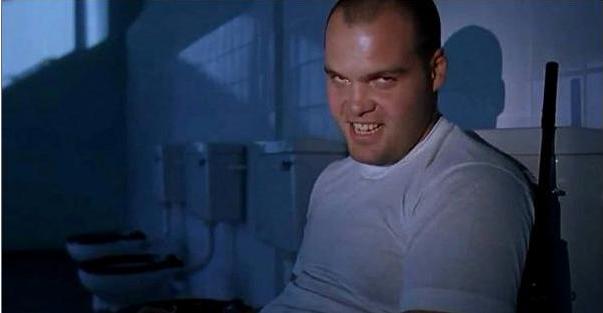The following document was in 1986 the Australian Army’s ‘Manual of Land Warfare – Part 2: Infantry Training – The Rifle Platoon‘. This was the full title of this Part 2 section of the manual of some 273 pages in length.
This manual is indeed pertinent to Julian Knight. Knight was initially an Infantry Trooper with the Australian Army Reserve [1985-86] and subsequently an Australian Army Officer Staff Cadet at the Royal Military College at Duntroon (undertaking 3rd Class basic infantry training as a junior cadet for the first 6 months of Duntroon’s 18 month military course. This manual would have applied to both. It was the Army’s then official manual for prescribed infantry training using a military automatic assault rifle.
The superseded/current manual is not readily available to the general public, probably for obvious reasons such as not wishing to hand over to Australia’s potential enemies to be familiar with the Australian Army’s battlecraft methods and infantry tactics in times of war. What is bizarre is that this Army manual was found online within less than a 5 minute Google search which brought up the document in a freely downloadable PDF format as follows:
Hey Kopassus and PLA Ground Force, get a geek of this doco dudes, before The Australian Army finds out, and reckons it would be wise to remove it!
It is presumed that Julian Knight, being a part-time trained Army Infantry soldier for around 2 years by the time of his Hoddle Street Shooting Spree, would have been infantry rifle trained to selected prescribed guidelines of this 1986 Army manual. So he likely would have applied these battlecraft methods and infantry tactics on the night of 9th August 1987 in his albeit delusional and drunken state of mind.
This manual provides a relevant insight. But what is dangerous specific to Julian Knight is that his recent infantry training was coupled at Duntroon with physical and psychological abuse, torment and bastardisation by senior cadets (those delegated authority 24/7 over such junor cadets under their charge like Knight).
What this meant was that on the one hand the Army was training Knight to kill very effectively using an assault rifle in infantry battle, yet at the same time was hatefully encouraging ‘negative leadership’ over Knight – deliberately and sadistically messing with his mental health in the pursuit of Army brass indoctrination, and undermining any respect he may have originally had for authority.
In 1987 at Duntroon, the standard issue weapon for officer cadets was a L1A1 Self-Loading Rifle (SLR) which was the same for the Australian Army Infantry at the time. This SLR assault rifle was based upon the Belgian FN FAL in design as a main battle rifle. It was reproduced under license and manufactured in Australia at the Small Arms Factory in Lithgow, New South Wales between 1959 and 1986 with around 220,000 units produced during this near three decade period for the Australian Army’s infantry use specifically for jungle warfare particularly in the Vietnam War [1962-75].
The SLR featured semi-automatic, automatic (machine gun) and safety modes. It used a standard 7.62×51mm NATO (country) rimless, bottlenecked rifle round cartridge; the ammunition being fed by either a 20-round detachable box magazine. It featured as standard, an aperture rear sight and hooded post front sight, a detachable bayonet (for when one run’s out of ammo but still keen) and has an improved Effective Firing Range to 800m. The early versions in Australia featured an Australian coachwood stock, pistol grip and handguard, whereas later models went plastic to save on cost. In 1987, most had the plastic.
This is what officer staff cadets including Julian Knight trained with weekly, either just outside Canberra at Duntroon’s Majura Firing Range using live 7.62mm ammunition, else on in-field training exercises on restricted Army bush ranges using live fire blank ammunition.
Julian Knight was well familiar with the SLR from his infantry training experience as a Trooper with the Army Reserves from 1985 and from subsequent further basic infantry training whilst a junior officer cadet at RMC Duntroon between January and May 1987.
Julian had also personally owned three long arm firearms.
- American-made Ruger model 10/22 being a .22 gauge 10-round slide/pump action repeating long rifle (manufactured by Sturm, Ruger & Co.)
- American-made Mossberg tactical slide/pump-action repeating shotgun (12-gauge)
- Chinese-made Norinco M14S semi-automatic hunting rifle. It could take a rifle scope for hunting but Julian’s was not fitted with one.
He stored these three rifles in his mother’s house under her bed along with the requisite ammunition. In 1987, it was then legal in Victoria ffor a private citizen with a firearms license to own and store such firearms and ammunition without the need for being in a secure locked steel cabinet.
The Norinco M14S semi-automatic hunting rifle was very similar in design and capacity to thee L1A1 SLR.
How can Army leadership training be any more contradictory? This is Full Metal Jacket stuff! How can RMC Duntroon in any way be absolved from its culpability for its warped military conditioning of Knight that drove him into a psychotic mad postal state of mind?

 Loading...
Loading...
References:
[1] ‘FAL, SLR (Self Loading Rifle)‘, by 5th Battalion, The Royal Australia Regiment Association Website, https://www.5rar.asn.au/weapons/slr.htm
